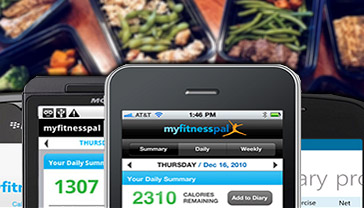GAINING FAT, NOT MUSCLE? 4 MISTAKES YOU’RE MAKING

Most trainees understand that if they want to add a significant amount of muscle to their frame, a certain level of fat gain is inevitably going to come along with it.
A committed bulking phase involves maintaining a net calorie surplus over time, and it’s just not possible to divert every single calorie you consume toward lean muscle growth only.
No matter how careful you are with your training and diet or how patient you might be, you’ll always gain some body fat if your goal is to fully maximize your progress.
But what happens if you’ve begun carrying out your bodybuilding program, and after a few weeks or months it seems like the only thing you’re gaining is body fat without any significant increases in muscle size?
Nothing is more frustrating than putting your time in at the gym and sticking to what you thought was a proper diet, only to see your stomach and love handles expand three times as fast as your chest, arms, and shoulders.
If it feels like you’re only gaining fat but not muscle, today’s post will explain the 4 primary mistakes you’re probably making so that you can steer yourself back onto the proper track…
Gaining Fat, Not Muscle? 4 Points To Consider
Before I dive into the 4 points below, keep in mind that as long as you’ve been eating in a calorie surplus and are performing some form of consistent weight training with reasonable intensity, it’s highly unlikely that all you’ve been gaining is pure body fat without any muscle at all.
Instead, the problem is simply that your overall ratio of fat gain to muscle gain is out of balance and that you’re putting on a disproportionately higher amount of body fat in comparison to lean tissue.
By addressing these 4 mistakes, you’ll be able to tip the balance back in your favor so that the majority of your gains begin coming in the form of quality lean muscle while keeping body fat gains to a minimum…
Mistake #1: Your targeted daily calorie intake is set too high.

If you’re putting on a high amount of fat with a disproportionately small amount of muscle mass to go with it, the simplest and most obvious factor at play is that your daily calorie intake is set at too high an amount.
You may have been told that you need to “eat big to get big”, and while there certainly is some truth to this, most lifters who are just starting out and want to bulk up as quickly as possible end up taking this way too literally. Don’t go overboard with how many calories you need to gain muscle.
Yes, you do need a caloric surplus in place if you want to make gains at the fastest rate, but your body can only utilize a limited number of excess calories in any given day for the purpose of building new muscle.
Stuffing your face with more and more food is not going to magically speed up the process, and any calories you take in beyond that maximum muscle building threshold will simply be diverted to your fat stores.
The goal of proper muscle building nutrition is to consume just enough calories to optimize hypertrophy, and nothing more.
That way, the maximum percentage of your calorie intake will be used for lean muscle growth while the minimum amount will end up as body fat.
If you’re gaining much more than around half a pound of total body weight per week on a consistent basis (or 3 pounds per month at the absolute most), you’re simply going overboard on calories and will need to dial things back.
You’ll still be putting on muscle in a situation like this assuming your training program is on point, but increases in body fat will be coming in at such a quick pace that it may seem like it’s the only thing you’re gaining.
How many calories should you be consuming per day to minimize fat gains while bulking?
You’ll hear many different recommendations across the board on this, but a safe bet when it comes to effective clean bulking is to consume around 200-300 calories above your maintenance level.
Going a bit higher or even a bit lower can be fine depending on the situation, but as a general rule, a 200-300 calorie surplus will work well for most average lifters.
If you don’t know your current calorie maintenance level (the number of calories you require daily in order to maintain your current weight), you can estimate it by using one of the following options…
Basic Multiplier: Assuming you’re starting out from a relatively lean base of around 10-15% body fat (I highly recommend that anyone committing to a focused bulk be somewhere around this range before beginning), you can simply multiply your current body weight in pounds by 14-16, going with the lower or higher end depending on your overall activity level.
Harris-Benedict Formula: If you want to be a bit more precise, this formula takes additional factors into account including your age, height and gender.
First, you’ll calculate your BMR (basal metabolic rate), which is the number of calories you burn at rest without any additional activity…
Men: (10 x weight in kg) + (6.25 × height in cm) – (5 x age in years) + 5
Women: (10 x weight in kg) + (6.25 × height in cm) – (5 x age in years) – 161
Then, multiply your BMR by the appropriate activity level…
Sedentary = 1.2 (little to no exercise)
Lightly Active = 1.375 (light exercise: 1-3 days a week)
Moderately Active = 1.55 (moderate exercise: 3-5 days a week)
Very Active = 1.725 (intense exercise: 6-7 days a week)
Extremely Active = 1.9 (intense daily exercise and strenuous physical job)
Once you have your estimated calorie maintenance level (using either the basic multiplier or Harris Benedict formula), just add 200-300 calories to that figure to determine approximately how many calories you should aim for each day.
Keep in mind that this is just an estimate though. You may need to adjust things up or down once you get going depending on how your body weight changes in response to that particular intake.
Mistake #2: Your targeted daily calorie intake is accurate, but you’re consistently exceeding it without realizing it.

What happens if you have taken the time to properly map out your calorie intake and are aware that your daily surplus should be kept on the moderate side, but it still seems like all you’re gaining is inches of body fat rather than muscle?
If that’s the case, the answer is probably quite simple…
The number of calories you’re actually eating each day is a lot higher than you think.
After over a decade of fitness coaching and working closely with an endless number of clients in that time, one thing I’ve learned for certain is that most people just aren’t very good when it comes to accurately tracking their true calorie intake.
Someone will complain that they aren’t seeing the results they were expecting, but when I sit down to fully “audit” their muscle building diet and break everything down step by step, it turns out they were actually off by quite a large margin.
This can happen for a few main reasons…
1) You’re simply not tracking your food intake with a high degree of precision.
If all you have is an overall calorie goal in mind and are just roughly estimating things throughout the day, it’s very likely that you’ll end up several hundred calories or more off target just as a result of not paying close enough attention.
Eating “on the fly” can work fine for more experienced trainees who know their bodies well, but for those in the beginning stages it’s not something I’d generally recommend.
If you don’t have some system of tracking place (whether it be by using nutrition labels, an online nutrition database or an app like MyFitnessPal), the natural instinct will almost always be to over-eat, especially when you’re in that “bulking mindset” and are motivated to pack on size and strength as quickly as you can.
2) You are attempting to track things closely but are making errors in your food choices and measurements that are adding up throughout the day.
All it really takes is a few mistakes throughout a given day for your calorie surplus to end up much higher than you originally intended.
For example, if what you think is 1 tablespoon of peanut butter is actually 2 tablespoons (this is a very common mistake), that’s 100 extra calories right there.
Other items that get added into your plan here and there without any real thought can also add up big time in the overall picture if you aren’t careful.
An extra glass of fruit juice… a handful of almonds… cooking oils… small high-calorie snacks… cream and sugar in your morning coffee…
These can all add up to a significant number of calories by the time the day is over if you aren’t taking them into account.
3) You’re taking the concept of “cheat meals” and “cheat days” too far.
There’s certainly nothing wrong with including so-called “cheat foods” in your muscle building plan in moderation (80-90% “clean food” and 10-20% “cheat food” throughout the week is a safe guideline). But this can become a recipe for disaster (pun intended) if you aren’t careful.
Your overall gains in body weight are ultimately going to be determined by your total net calorie balance for the week as a whole, and everything you consume from day to day counts toward that total.
For example, if you ate in a 300 calorie surplus from Monday to Friday, but then let loose on the weekend and ate in a 1200 calorie surplus on Saturday and Sunday, that would bring your true daily surplus closer to 550 per day for the week on average, or almost double what you originally intended.
Bottom line: when calculating your daily calorie intake for muscle growth, all “cheat meals” and “cheat days” count and are not somehow a “free pass” just because you stuck to your training and diet over the previous few days.
Mistake #3: Your weight training plan is not being properly executed.

This might sound like very simple advice, but if you can honestly say that your nutrition plan is on point and you’re still gaining fat without muscle despite this, chances are that your overall workout plan just isn’t up to par.
I mean, think about the basic logic of muscle growth for a second…
- You enter the gym and place your muscles under stress in order to stimulate an adaptive growth response.
- You leave the gym and eat in a calorie surplus to provide your body with the resources needed to repair and rebuild those muscles larger and stronger.
However, if the initial growth response you attempted to create in those muscles was not strong enough to begin with, your body won’t even require all of the extra calories you’re eating in order to fully recover from the workout.
As a result, all of those unneeded calories won’t have anywhere else to go except to your fat stores, and only a small portion of it will be diverted to your muscles.
So, if you’re gaining fat but not muscle, you really have to sit down and be honest with yourself…
- Are you truly training hard in the gym and pushing yourself at or near your limits by taking each set at least a rep or two short of concentric muscular failure?
- Are you keeping track of your workouts in detail and applying the law of progressive overload by steadily increasing the weight on the bar over time?
- Are you sticking to your plan consistently and executing 3-5 properly structured workouts on the assigned days?
- Are you utilizing enough overall training volume and leaving the gym at the end of each session knowing you did enough?
The simple fact is that a lot of guys in the gym just plain don’t train hard enough and aren’t consistent enough with their workouts, and then can’t figure out why they aren’t putting on quality muscle size like they expected.
If you’re eating in a calorie surplus but aren’t generating a sufficient growth stimulus through your training plan, most of what you gain will inevitably be fat rather than muscle.
Mistake #4: You simply have unrealistic expectations about how the muscle building process works.

The final point to consider here is the possibility that nothing is actually wrong with your plan at all and that you’re simply expecting too much too soon.
Despite how it’s usually portrayed in advertisements for crazy over-hyped supplements and bodybuilding “breakthrough programs”, the fact is simple…
Building muscle naturally is a relatively slow and gradual process for the average lifter.
Dramatic body transformations don’t happen overnight, and it takes time, patience, and consistent effort over the long haul to truly pack on an impressive amount of quality lean mass.
I’ve received a ton of messages over the years from guys claiming that they’re “gaining fat, not muscle”, but when I ask about their program in more detail it turns out that they’ve only been training for a few consistent weeks with a couple pounds of added body weight to show for it.
Some of that initial weight gain they’re experiencing often isn’t even body fat at all but is simply an increase in water retention due to the higher calorie diet they’re now following.
So, make sure you don’t jump the gun here.
You aren’t going to begin your bulking phase and have defined pecs, delts, and biceps popping out within a matter of weeks.
It’s a slow process of consistent small increases from week to week, and it will take a few months of proper training and nutrition before you start seeing visible noteworthy muscle gains in the mirror.
Gaining More Fat Than Muscle? Quick Review

Reality check: a “healthy diet” is not enough for muscle growth and fat loss.
If you’ve committed yourself to a muscle building program but are disappointed because you feel that you’re simply gaining fat and not muscle, these are the 4 main things you’ll want to do to prevent fat gains while bulking and keep your gains as lean as possible:
- Ensure that your targeted daily calorie intake isn’t set at too high a level. Your body can only build a finite amount of lean mass over any given day, and going much beyond 200-300 calories above maintenance will likely result in a disproportionately high amount of body fat gain relative to muscle gain.
- Fully “audit” your diet and track all of your weekly calories in detail (at least for a temporary period) to see how much you’re truly eating on a daily basis, taking into account ALL meals, drinks, snacks, condiments and cheat foods. Most people who do this quickly realize that they were actually consuming far more calories than they thought.
- Examine your weight training plan and be honest with yourself to ensure that you’re truly training with sufficient intensity, volume and frequency, and that you’re consistently progressing in weight and reps on your lifts from week to week. If you eat in a calorie surplus but don’t train hard enough, most of those calories will just end up as fat.
- Have realistic expectations. If all of the above is taken care of then there’s always the possibility that you’re just expecting too much muscle growth over too short a time period. Building muscle requires plenty of time and patience for a natural lifter, and you may be putting on weight at a perfectly acceptable rate but just need to be more patient with yourself.
If you found this article helpful, make sure to sign up for your FREE custom fitness plan below...




